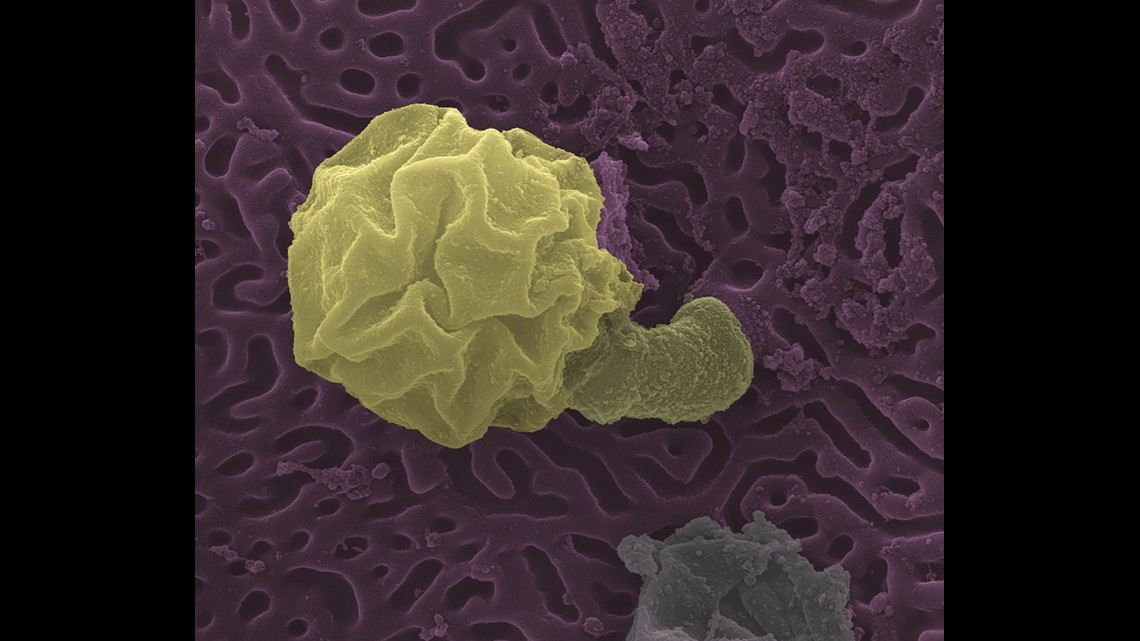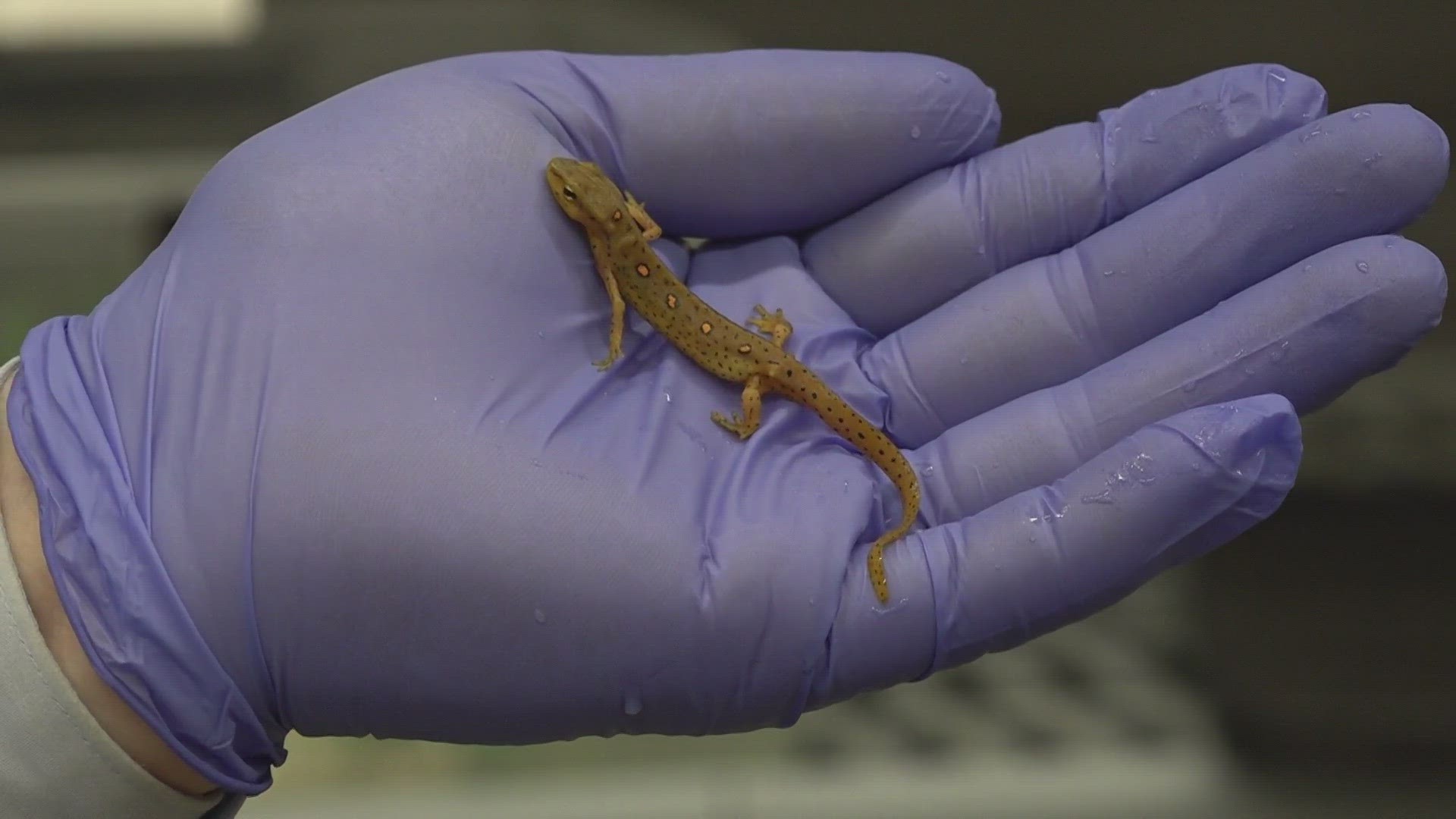KNOXVILLE, Tenn. — In East Tennessee, there are cows resting and homes swallowed by greenery. Salamanders like Henry are out there too, but Henry lives in a lab at the Center for Wildlife Health.
Matthew Gray, the Associate Director for the University of Tennessee Center of Wildlife Health, said amphibians have both biomedical and environmental benefits. He said salamanders are helping with research that could help people who have had amputations.
"Salamanders are amazing. They can regenerate their limbs," Gray said. "If, during a car wreck, if you had to have a leg or arm that was amputated, we could actually signal those cells to actually regenerate your hand, for example, if it was your arm."
Salamanders also produce pain-killing toxins called analgesics, Gray said. These toxins can be 20 to 40 times more potent than morphine and they're not addictive, Gray said. This is because they target different pain receptors than the opioid receptors. And it's not the only benefit.
"They're able to cut off pain and they are not as addictive, like many of the pain medicines that we use nowadays," Gray said. "It's been shown that peptides from the skin, frogs and salamanders can actually inactivate, HIV and other viruses that are extremely detrimental to humans."
The Great Smoky Mountains are known as the Salamander Capital of the World for its diverse species of amphibians crawling through the mountains' streams and rivers. There are 30 species of salamanders in the mountains and 14 species of frogs and toads.
The director of the University of Tennessee Center for Wildlife Health, Deb Miller, said in a paper published in the Sierra Club magazine that researchers have been working over the past decade to learn more about a fungus that could be deadly to salamanders. Researchers first found "Batrachochytrium salamandrivorans," or Bsal, killing salamanders in Europe in 2013.
"What we found was that 75% of our species that exist in the U.S., many of them are here, right here in southern Appalachia, are susceptible to the pathogen. And if they get infected, about 40% of them die," said Gray.


Salamanders are important for the Great Smoky Mountains' ecology, and they can also be studied to help people.
"Amphibians actually provide a really important role for human health," said Mark Wilber, an assistant professor of wildlife health at the School of Natural Resources. "So there's a really interesting study in Central America where we saw drastic amphibian declines due to this pathogen. Following those amphibian declines, we saw spikes in malaria incidence in humans. When we lose all the amphibians, we see an increase in mosquito abundance. Mosquitoes are biting us and transmitting disease."
The fungus threatening salamanders is related to Batrachochytrium dendrobatidis, which has contributed to the extinction of frog species worldwide, according to the paper. Deb Miller, the director of the UT Center for Wildlife Health, said Bsal infects salamanders' skin, one of the most vital parts of their biology.
She said salamander skin is important to balance their electrolytes and for hydration, as well as respiration. Skin infection from Bsal could trigger heart failure or other fatal conditions, she said.
The paper also said not all salamanders are equally susceptible to a Bsal infection or to developing symptoms. It said two families of species have so far been observed dying from Bsal — Salamandridae (newts) and Plethodantidae (lungless salamanders). Plethodantidae is the largest salamander family, according to the paper.
It says that Bsal has not spread to the Americas, but could spread to the country in the future.
"The future hope is that all folks in our society really recognize the importance of amphibians, including salamanders," Gray said. "Because there are all these amazing potential biomedical benefits that they can provide to humans, as well as environmental benefits, and they're really important components of the ecosystem."

